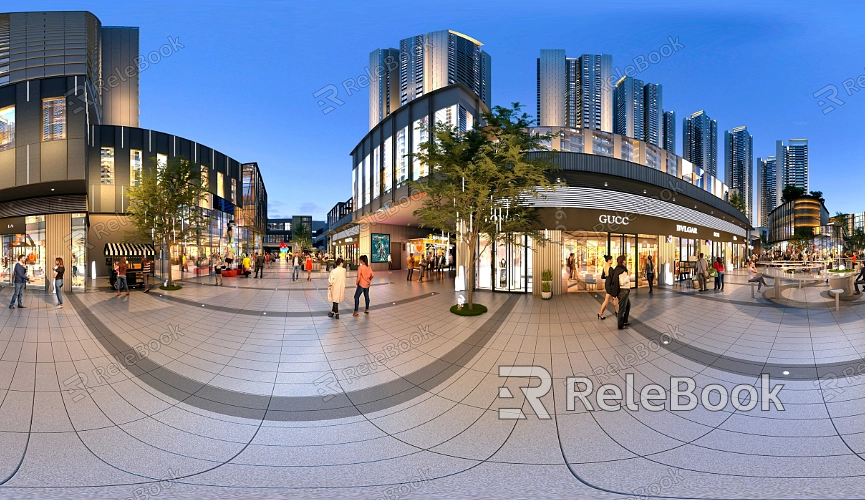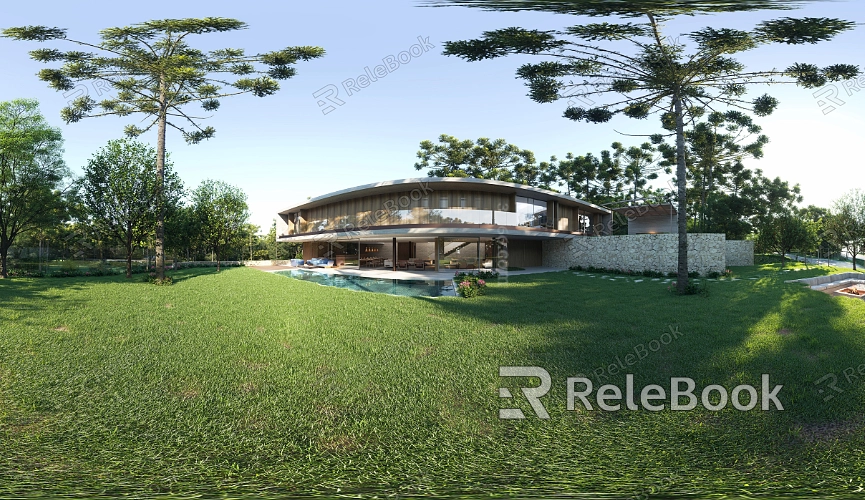What is an HDR Image
In the fields of architectural visualization, product design, and visual effects, the use of HDR (High Dynamic Range) images is a common practice. These images excel at capturing and presenting the full range of brightness in a scene, including both highlights and shadows, resulting in more realistic renderings. Popular 3D software like Blender, 3ds Max, and Cinema 4D all support the use of HDR images. This article will explore what HDR images are, how they are created, and how they can be applied in 3D modeling and rendering.

Understanding HDR Images
HDR images are a type of image that can display and store a much wider range of brightness levels compared to traditional images. Unlike standard Low Dynamic Range (LDR) images, HDR images retain more detail in both the bright and dark areas of a scene.
1.High Dynamic Range
HDR images capture details in both the lightest and darkest parts of a scene. This means that in complex lighting environments, HDR images can preserve both the bright highlights of the sky and the deep shadows on the ground, creating a more balanced and natural overall picture.
2.Rich Color Representation
Because HDR images have a broader dynamic range, they also offer superior color representation. They can display a richer palette of tones and gradations, which is crucial for achieving realistic effects in 3D scenes.
Creating and Processing HDR Images
The creation of HDR images typically involves capturing or generating multiple images at different exposures, which are then combined into a single HDR image. In 3D software, designers can also generate HDR images directly through rendering settings.
1.Exposure Bracketing Technique
A common method for creating HDR images is to take several photos of the same scene with different exposure settings. Each photo captures a different level of detail, from the darkest shadows to the brightest highlights. These photos are then merged into one HDR image using image processing software.
2.HDR in 3D Rendering
In 3D rendering, designers can adjust the rendering settings to output images in HDR format directly. This approach is particularly useful for scenes that require further optimization and adjustments during post-production.

Applying HDR Images in 3D Software
HDR images have a wide range of applications in 3D modeling and rendering. By using HDR images, designers can add more realistic lighting effects to their scenes, enhancing the overall visual fidelity.
1.Environmental Lighting Maps
Many 3D software programs allow designers to apply HDR images as environmental lighting maps in a scene. This enables objects within the scene to reflect the realistic lighting of an actual environment, thereby increasing the scene's realism.
2.Reflections and Refractions
HDR images are also frequently used to create reflection and refraction effects. By using HDR images as reflection maps, designers can make surfaces reflect realistic environmental lighting. This is especially important for materials like metal and glass.
HDR Image Formats and Storage
HDR images are usually stored in specific file formats to ensure that their rich lighting and color information is not lost. Understanding these formats and how to use them correctly is essential in 3D modeling and rendering.
1.Common Formats
Common HDR image file formats include HDR (Radiance format), EXR (OpenEXR format), and TIFF (with 32-bit floating-point channels). These formats can preserve high dynamic range lighting and color data and are widely used in 3D software and post-processing tools.
2.File Management
HDR image files tend to be large, so proper storage and management are critical. Designers should ensure that they use storage devices that support HDR images and organize and back up these files to make them easily accessible during post-production.
By understanding and applying HDR images, 3D modeling and rendering designers can significantly enhance the visual quality of their work, creating more realistic and compelling scenes. If you're looking for high-quality HDR image resources, 3D textures, SketchUp models, or 3ds Max models to download and use in your projects, Relebook is an excellent resource. Downloading textures and models from Relebook and importing them into 3D Max can greatly improve the quality of your work.

